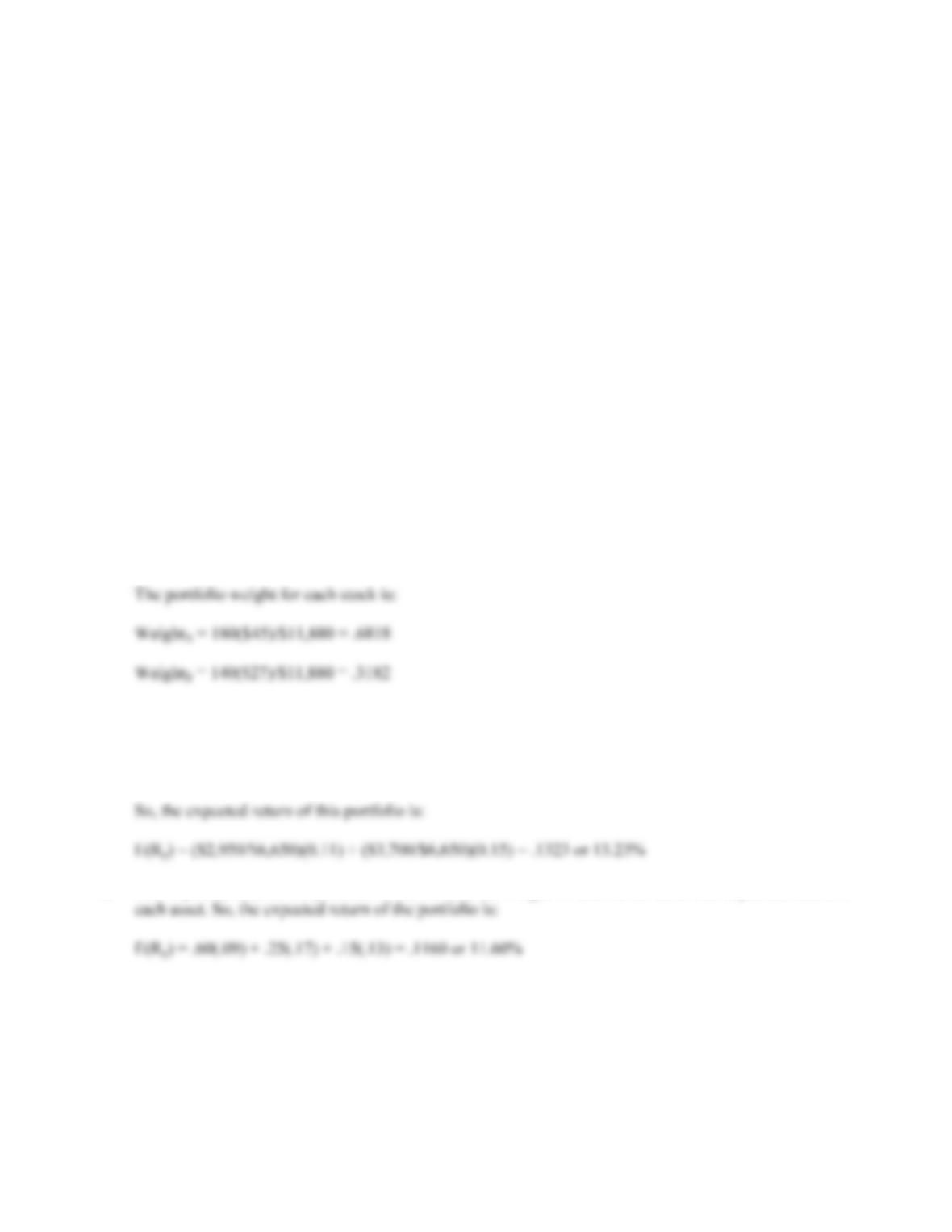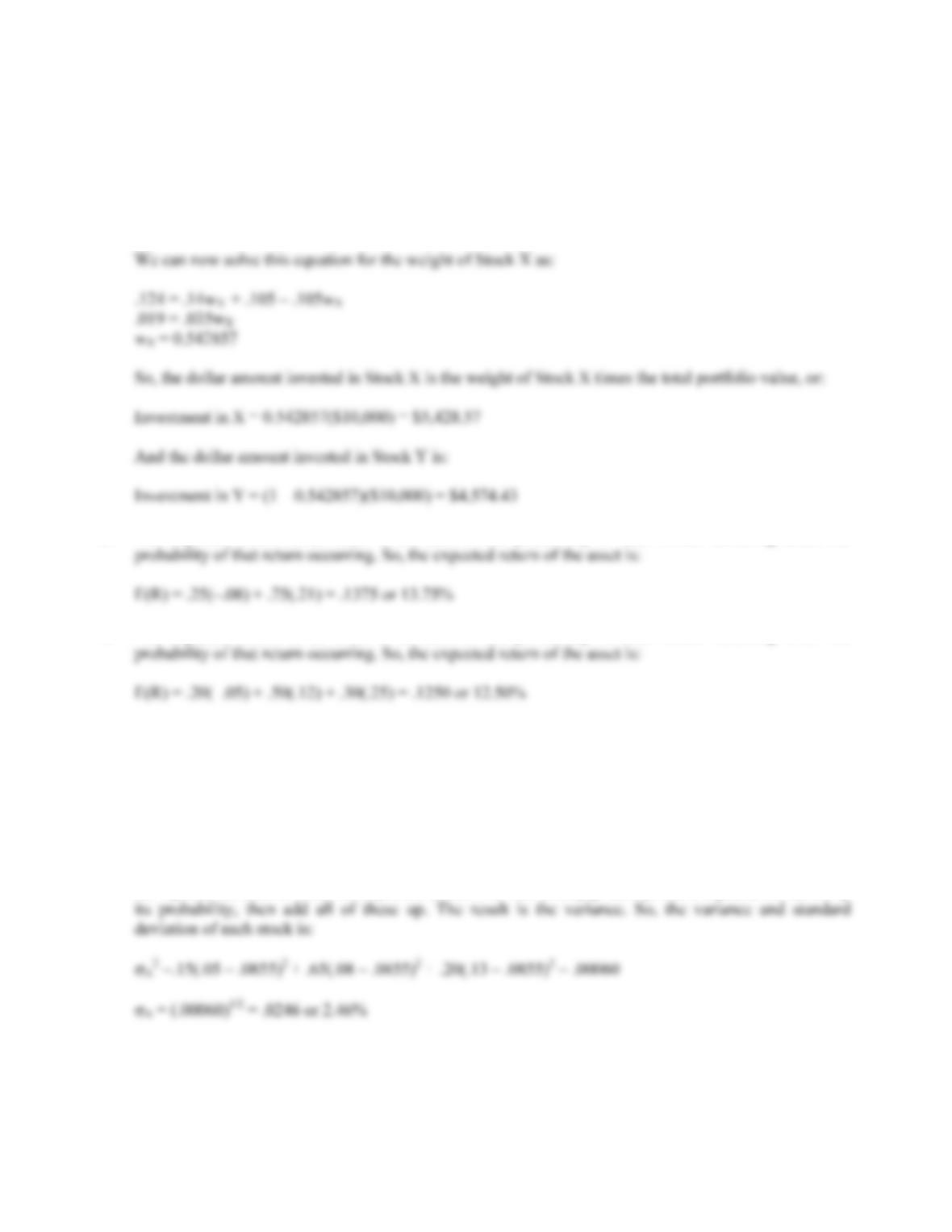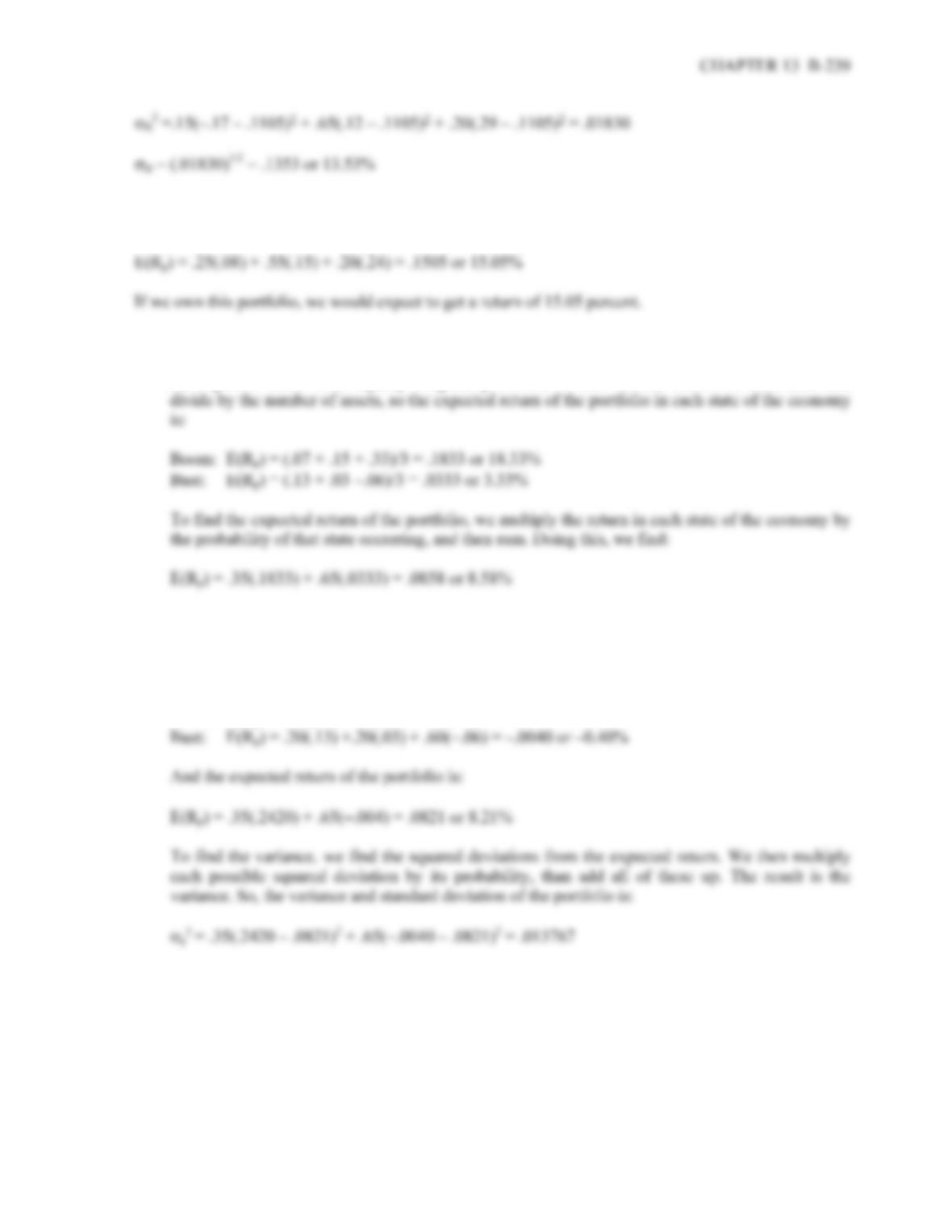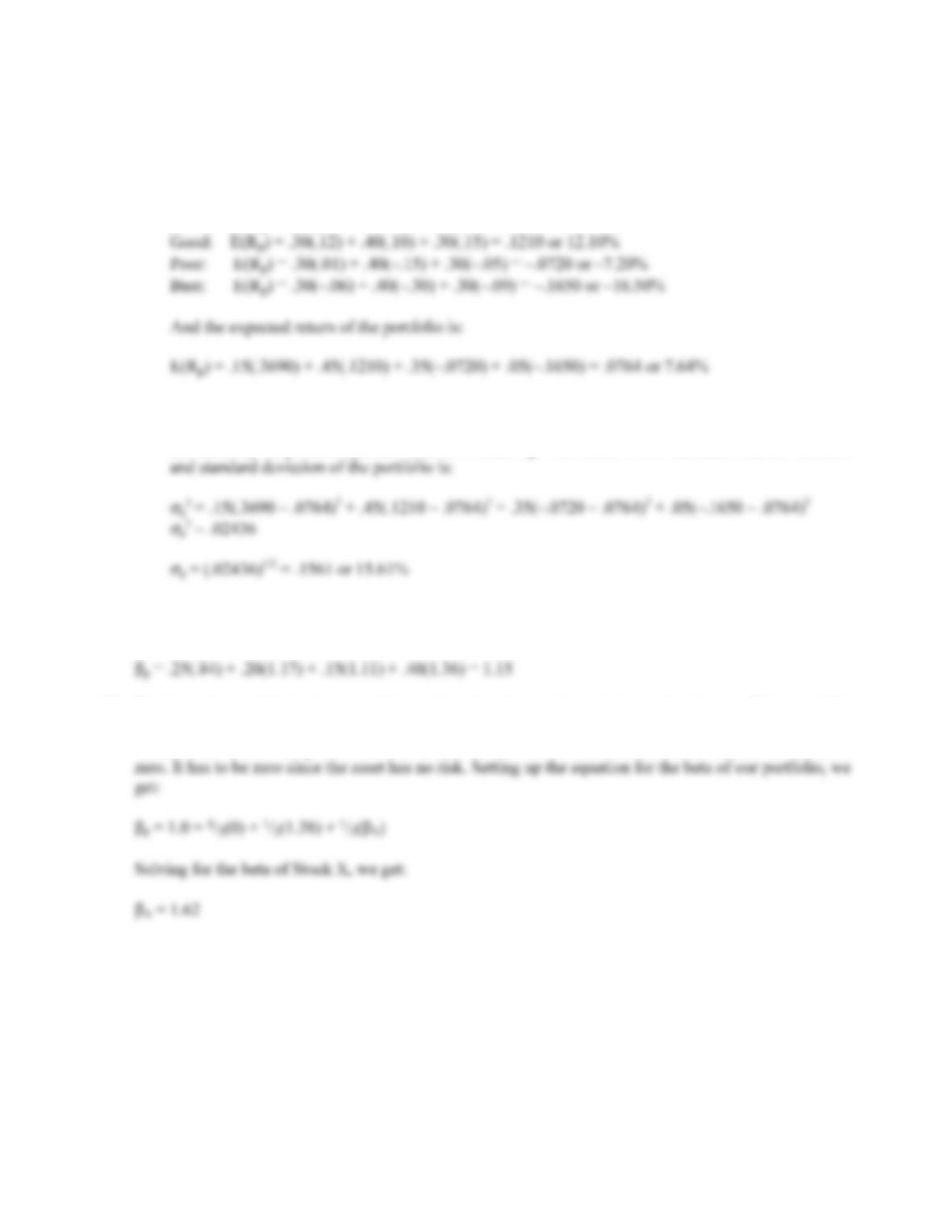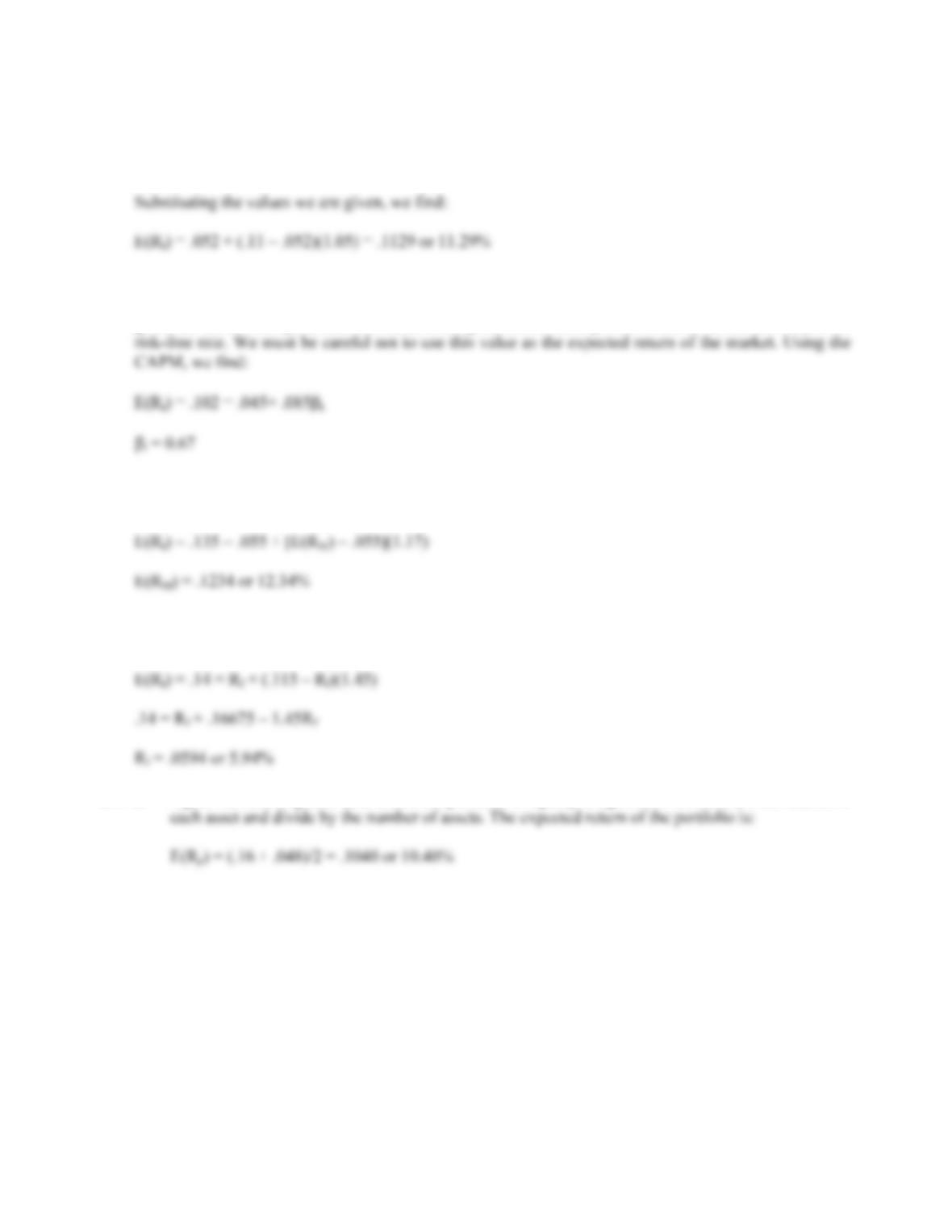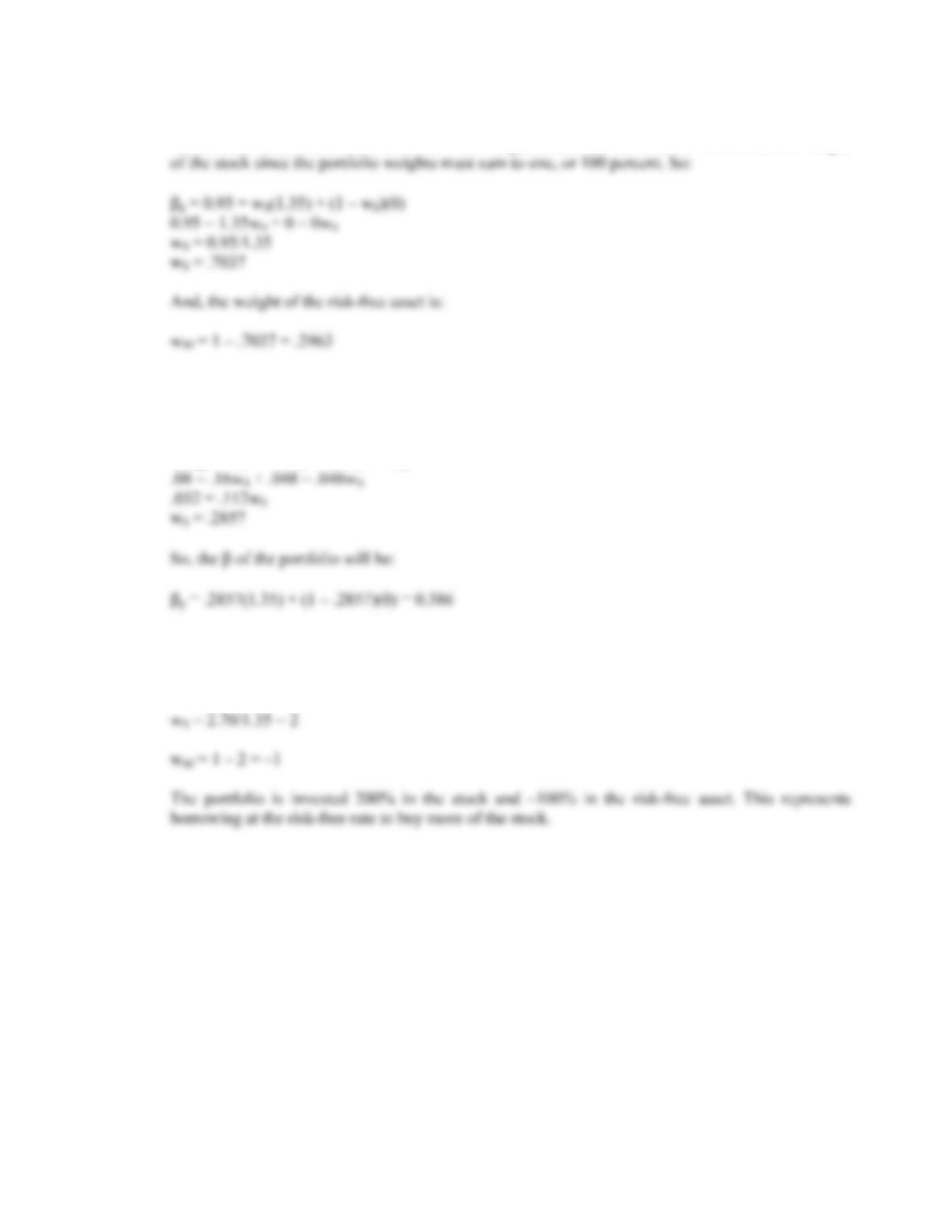CHAPTER 13 B-237
9. Such layoffs generally occur in the context of corporate restructurings. To the extent that the market
views a restructuring as value-creating, stock prices will rise. So, it’s not layoffs per se that are being
cheered on. Nonetheless, Wall Street does encourage corporations to takes actions to create value, even
if such actions involve layoffs.
10. Earnings contain information about recent sales and costs. This information is useful for projecting
future growth rates and cash flows. Thus, unexpectedly low earnings often lead market participants to
reduce estimates of future growth rates and cash flows; price drops are the result. The reverse is
often true for unexpectedly high earnings.
Solutions to Questions and Problems
NOTE: All end of chapter problems were solved using a spreadsheet. Many problems require multiple steps.
Due to space and readability constraints, when these intermediate steps are included in this solutions
manual, rounding may appear to have occurred. However, the final answer for each problem is found
without rounding during any step in the problem.
Basic
1. The portfolio weight of an asset is total investment in that asset divided by the total portfolio value.
First, we will find the portfolio value, which is:
Total value = 180($45) + 140($27) = $11,880
2. The expected return of a portfolio is the sum of the weight of each asset times the expected return of
each asset. The total value of the portfolio is:
Total value = $2,950 + 3,700 = $6,650
3. The expected return of a portfolio is the sum of the weight of each asset times the expected return of
